
Maruti Suzuki Rock N Road: Redefining the SUV Experience
- Mar 16, 2024
- Views : 66250

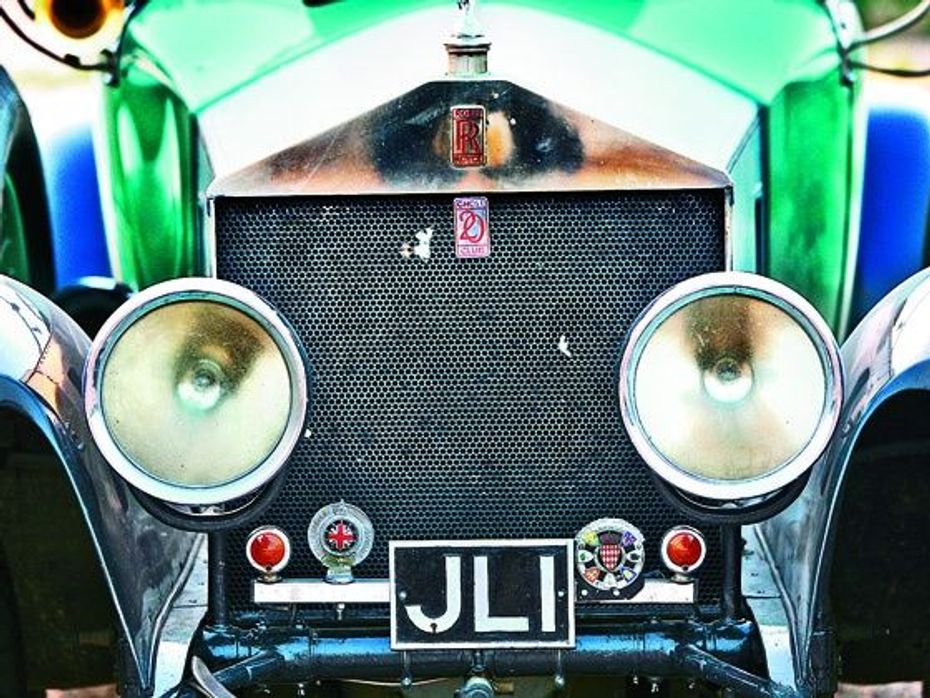
Just the other day I was going through my archives and I stumbled upon a copy of the now defunct British magazine The Car. In its issue of 1910 there was a commentary on the suitability of India as a destination for motorists from Europe. In those days we had very good roads, paved to a great extent, tree lined and with sparse traffic, most of which was made up of horse and bullock-drawn carriages.
The automobile was then in its infancy in India and was seen more as a nuisance by a section of society yet to get to grips with mechanical carriages while those who were technologically inclined and wanted to go with the times, provided they had the wherewithal of course to afford them, took to the huge leviathans with gusto. The first recorded instance of a motoring event with an element of competition thrown in was the Delhi-Bombay Motorcar Trials of 1904-05 and this event proved the efficacy of the new fangled invention for personal mobility beyond an iota of doubt.
Motoring got a tremendous fillip in the country and when the Delhi Durbar took place in the year 190000, Indian royalty turned out in strength to welcome and meet the British monarchs and what better way to impress them and their fellow royals than in the rich diversity of cars they owned. Indian motoring never looked back from thereon and the suitability of India as a motoring destination gained even more significance.
You must be wondering what has made me give this preamble but it was needed to reinforce the sort of motors that ran on our roads in the first three decades of the last century. Not only did the cars manufactured in the period 1900-1935 run like clockwork, they steered, handled and stopped with an alacrity which many of us in the present era would never be able to comprehend.
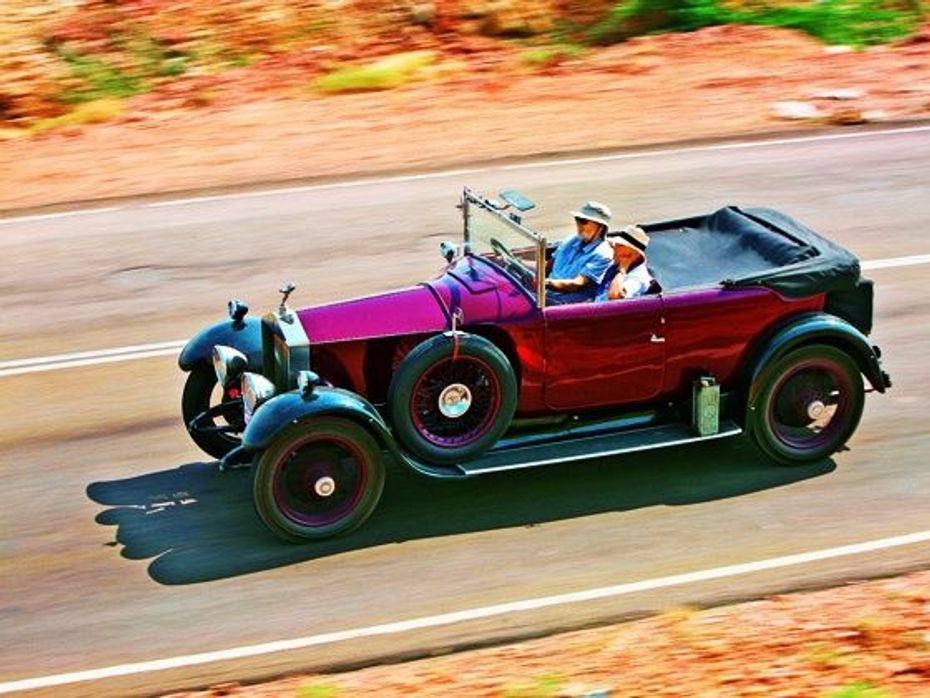
In the 110 years or so of automobiles in our country, it is now not so incongruous to note that we have begun developing a proper all-round perspective to enjoying every facet of motorization across the land and also across the social spectrum. The latter is key to understanding and appreciating the one fundamental right that we cherish and also take for granted – the freedom of mobility. And a recent drive by a bunch of enthusiastic Europeans in glorious machinery with some over 90 years old across the famed Rajasthan landscape encapsulated everything I have outlined above.
Motoring for the committed has as much to do with locale and terrain plus of course people and hospitality and nothing comes close on this count than the tradition rich state of Rajasthan. Rajput royalty has always excelled, in the heritage hospitality sector which can fall back upon a rich regalia of forts, outposts, game sanctuaries, sand dunes, colourful people, great roads and of course a penchant for grand cars. Enter Rolls-Royce restorer Graham Carter, a man who has spent almost his entire working life looking after Rolls-Royce cars from the earliest ones to the very latest.
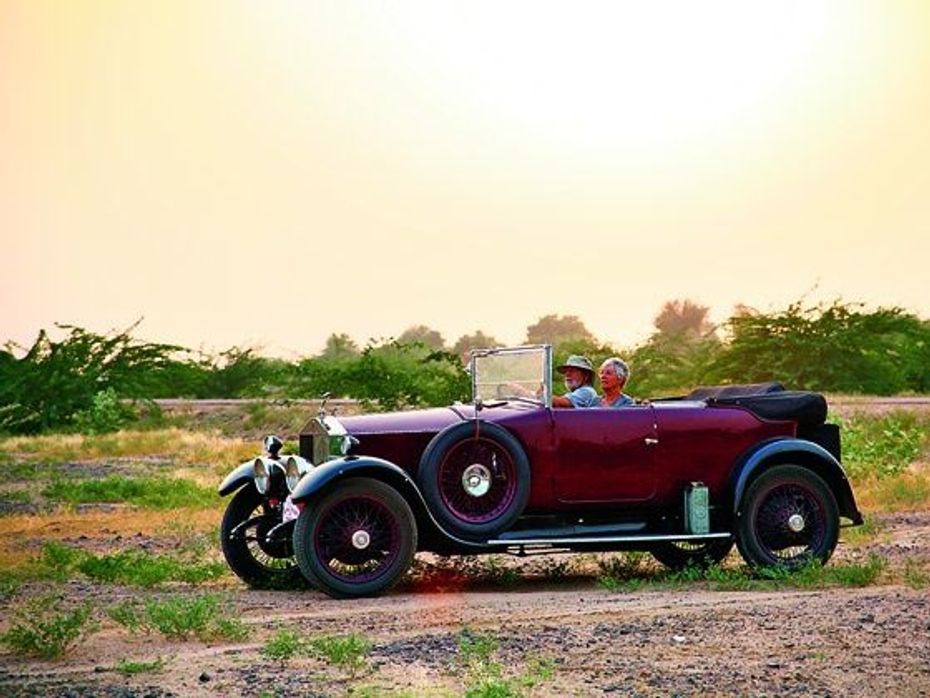
Graham is something of a legend among Rolls-Royce experts the world over because unlike other restorers he possesses an innate feel for the marque and this goes down well with his tremendous fettling ability on some of the greatest early machinery put together by Henry Royce and team. Silver Ghosts, Twenty, the new Phantom and then on to Phantom II and III, and many others after the war, Graham has seen them all, worked on them all and more importantly driven them extensively. Not for him the nannying kind of owner for he believed, like Henry Royce did, that these cars were meant to be driven and used in all conditions regularly and so even today at his advanced age (which he didn’t reveal) he was there to lead a band of kindred souls all aboard assorted Rolls-Royce cars, many of them with great provenance and of course all of them being in tremendous fettle.
Graham has been a sort of an Indophile, working closely with some of the Rajasthan royals in keeping their fleet of vintage and classic cars motoring in fine shape. In recent years he had restored the 1934 Rolls-Royce Phantom II of Maharana Arvind Singh Mewar of Udaipur as also the imposing 1927 Rolls-Royce Phantom I belonging to HH Maharaj Gaj Singh of Jodhpur. But there is another story hidden behind this as well and it concerns an Englishman by the name of Peter Vacher. I am sure no one can fathom that the concerned person is a Parsi of Indian origin, Vacher being an anglicized version of the Parsi family name Vatcha! The association between Maharaja Gaj Singh and Graham Carter had as much to do with Peter Vacher (this is story for another day) who introduced Graham to HH Maharaja Gaj Singh that among many things also led to this recent Royal Tour of Rajasthan.
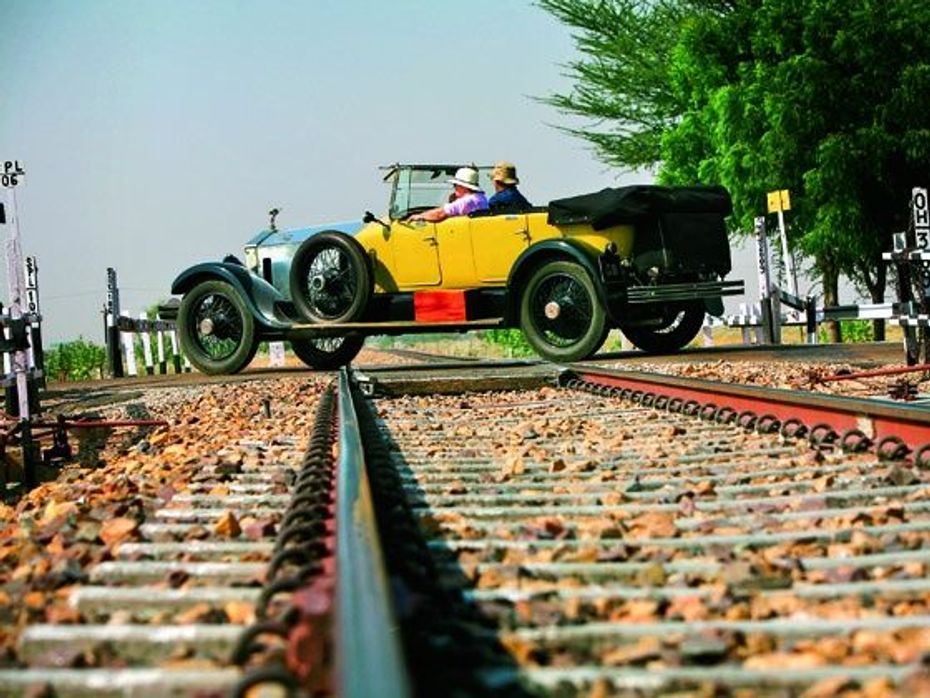
In Europe and the US, many classic car owners are always looking forward to giving their rare motors a go in like-minded company and for the seven pairings who flew down from Europe with their cars, Rajasthan was as exotic as they could get. Graham who has driven across the state tied it all up with his royal friends to come up with a near 1100km route across princely territories. The thought of staying old forts with the royals themselves ranks highly in the minds of Europeans and naturally Rajasthan floored them in all respects. The route for the Royal Tour began from Udaipur and from there on it moved to Dungarpur, Bamborra, Ranakpur, Sadasamund and on to Jodhpur where the first leg culminated. From Jodhpur the intrepid convoy of vintage Rolls-Royces and their dashing crews motored on to Nagaur, Pokaran, Jaisalmer and then back-tracked to Pokaran before finishing in Jodhpur.
The great thing about the cars and the event was that very similar cars used to thunder down these very roads in the 1920s and 1930s but to see them doing ton up speeds with amazing clockwork efficiency and with the sweetest of exhaust notes, in this day and age made many of us sit up and take notice. I was with the tour for barely two days, using the latest BMW X5 to run along with the cars and our lensman and dare I say it, the X5 had its work cut out running along sides them all.
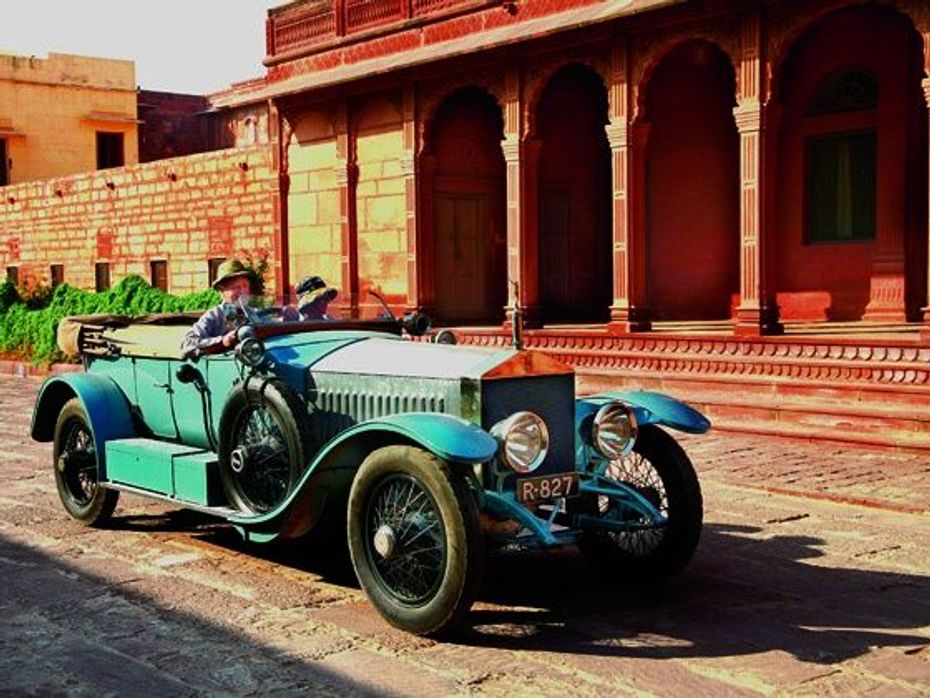
Let’s start with Graham Carter's car, a Phantom I circa 1927. This car was amazing in that, in true Henry Royce tradition, Graham has tinkered with it to help improve it with engine mods across the years in the interests of not just power but better driveability and reliability. Graham’s Phantom I has special pistons with the compression ratio bumped up from the original 4.25:1 to 5:1. Graham let it sink into me that Henry Royce had a penchant for low compression engines coupled to an aversion to going fast! He also inferred that Rolls-Royce in those days used to make their cars with very low gear ratios for the majority of drivers in those days didn’t really know how to drive so a lower rear axle ratio helped in keeping gear shifts to a minimum. However, on his car he had also upped the rear axle ratio (by 23%) and these mods had helped not just enhance the fuel efficiency but also bump up the top speed massively. I was in the co-driver’s seat for the run from Fort Pokaran to Jaisalmer and the speedo needle was constantly in the 70 to 80mph (miles per hour) region. Work what that means in kilometers per hour and you’ll agree that it is great, for a car which is almost 83 years young! In fact, to all those Rolls-Royce owners with similar cars in India, the high compression pistons and the revised rear axle ratios are available from Graham who has set up a lucrative operation which is win-win for all.
Graham's Phantom I, bearing registration number AYE-2, originally came with a saloon body but this was revised by its then previous owner, in 1950, to sport a torpedo tourer coachwork by Jacobs and that it what she carries to this day. Not bad for a car which has done well over half a million kilometers and keeps on motoring in the manner intended.
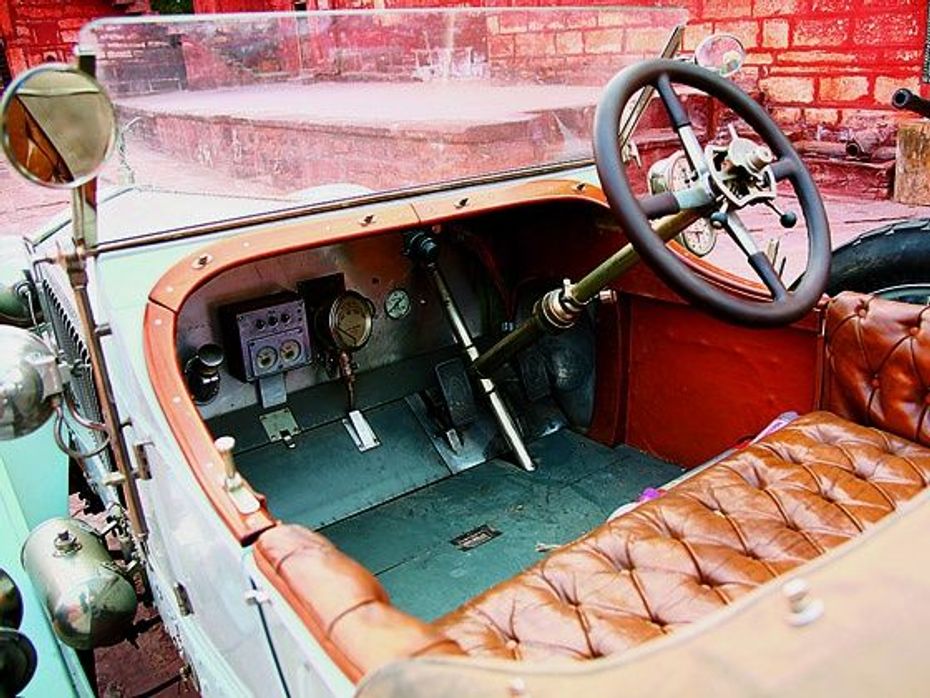
Another Phantom I on the Royal Tour was the magnificent and blindingly dazzling example with tall limousine coachwork by Windovers belonging to HH Maharaja Gaj Singh of Jodhpur. This car had just been given a from the ground up restoration by Graham but the even more significant detail was that it had lain on blocks in the royal garage for well close to five decades before it was brought back on the road. This all-aluminium bodied car was originally delivered for the use of the Maharaja of Dhrangadhara, a cousin of Maharaja Gaj Singh and it came with all the bells and whistles and of course a tastefully decorated compartment at the rear for the Maharani sahiba and the ladies of the royal court. This car has to be one of the best examples of its kind in the world, and also the one with the least miles on its odometer. Peter Vacher who drove this on the Royal Tour told me that it has done less than 10,000km since it hit the Rajasthan roads in 1927! Now that is rare to go with royal.
The most modern car of the lot which came in from Europe was the 1933 Phantom II of Dr Michael and Angelika Elliott. This glorious car (reg. No. AGN-333) has seen action all around Europe, in many classic car events and tours and among its list of former owners was the Greek ambassador to England who had it in the 1940s. Dr. Elliott bought it in 1992 and it has since then been fettled by Graham. This car looked splendid in true understated Rolls-Royce manner, its Barker sedenca drophead coupe coachwork standing out with a sporty tinge. In fact word has it that this three-position drophead coupe design was originally one penned by Gurney Nutting but executed by Barkers!
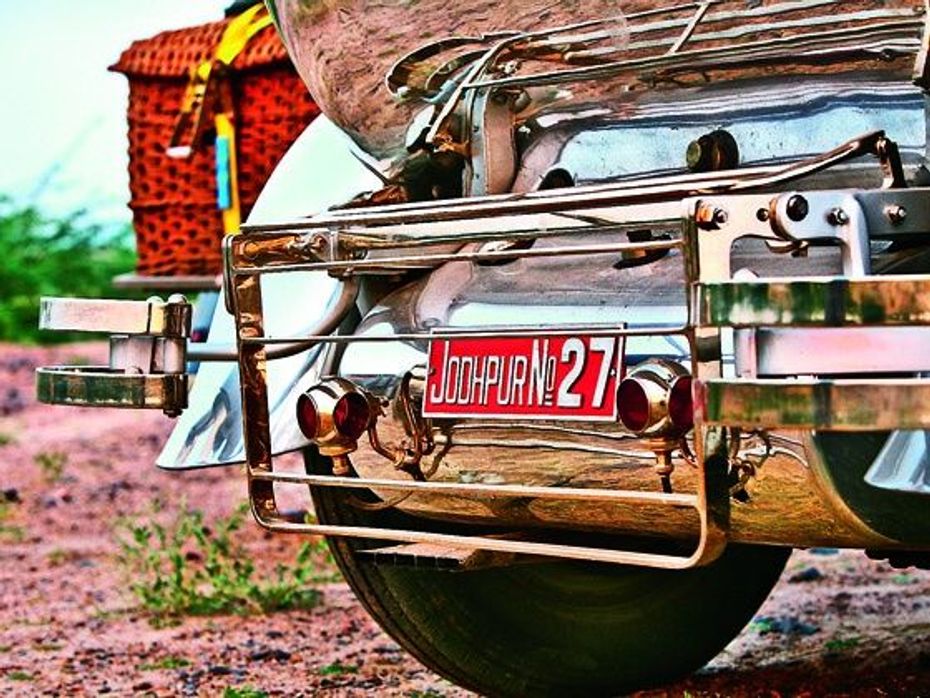
The baby in the group was obviously the 1928 Rolls-Royce Twenty with a Barker barrel coupe coachwork. This was the quintessential small Rolls built to complement the larger 40/50 HP Silver Ghost and in fact many such came to India. Of course it was priced lower than the Silver Ghost so this might also have helped but it was also one of the main stays of the marque s it made its transition from Silver Ghost to the Phantom I. This 20 HP bearing Swiss registration number ZH 17343 was crewed by Jean-Pierre and Alexandra Mueller-Ghika who purchased it in 1995, had Graham work on it and improve its mechanicals (high compression pistons, etc) and from there on it has been on the European classic car tour circuit. In fact, India was just its second tour out of Europe, with its first such being a classic car rally it tackled in Jordan.
And now we come to a quartet of Silver Ghosts which were probably the most impressive of the cars on tour. Judging by the way they drove and performed, one could well understand why it was adjudged the “best car in the world” then! A moniker which has sat well on the brand till now. The most recent of this bunch was the 1922 version with light touring coachwork by Hooper and crewed by Clayton and Helen Banks. 34 MG was purchased by Clayton’s father in the late 1950s and it has been with his family all along. Clayton and his better half have used it on classic car events in Ireland, France, Croatia and the UK with drives in South Africa and now India added to her sporting roster.
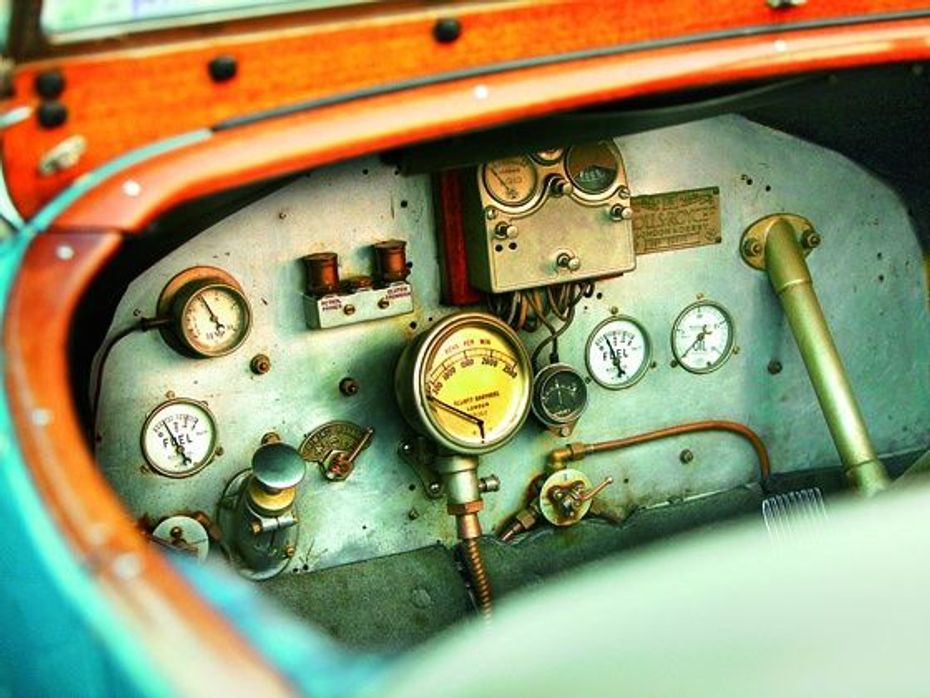
Gervase and Margaret Forster’s 1921 example bearing registration number SV-6608 has probably a unique tourer coachwork done by Portuguese bodybuilder Lopes patterned on Barker design. It was purchased new by Franchesco Alcada, a wealthy Portuguese textile mill owner, who used it as everyday transport. The car met with an accident in 1928 whereupon it was sent back to Rolls-Royce in England for repairs and after it came back, it was sparingly used apart from a period in the 1940s when it was lent to Salazar, the Portuguese President for official state functions. It came up for auction in the UK in 1979 and from there on it went through four owners before Gervase bought it in 1995 and has used it ever since rallying all over Europe, South African, New Zealand and now India.
On to the second oldest car in the field, the 1914 40/50 HP Silver Ghost handled by Roland Duce and companion Kimberley Hughson on the event. This car went to the US in 1919 and was rebodied there in 1924. Originally ordered with the London-Edinburgh type Silver Ghost specification with low-slung radiator, three-speed gearbox and high ratio rear axle, this car was owned for many years by the great American car collector Millard Newman. It was purchased in 1995 by Roland after Newman’s death and then brought back to the UK where it got an all-new body which is an exact replica of a Barker torpedo tourer. I was astounded to see the level of detail on this car that was rakishly sporting and also the metallic finish was something which blew me off. In fact, Graham enlightened me to the fact that even in those days Rolls-Royce used to mix fish scales and bits of aluminium foil in the paint and then apply a final lacquer coat to give a unique shimmering tint to it. Roland has used this car extensively to pursue his hobby of classic motoring and the manner in which this car would storm way from the others on the tour was a sight to behold.

And on to the oldest and probably one of the greatest cars not just in this Royal Tour but also in Rolls-Royce history – John and Rae Kennedy’s 1913 40/50 HP Silver Ghost. This car sporting registration number R-827 won the 1913 Austrian Alpenfahrt rally in the hands of the great adventurer James Radley who was also responsible for the design and build of the bodywork as well. This event was the forerunner of modern day TSD events but with the provision that the car couldn’t stop even for a moment on the stages, neither for repairs or replenishments for fuel, oil or water. As such it came with unique fitments which helped Radley demolish the competition and take overall honours on the event in 1913. It then passed into the hands of another great British driver Capt. W. D’Arcy Hall who competed with it at Brooklands, lapping the great speed bowl in 1919 at 82mph! Hall kept it as his official transport till he sold it for one hundred pounds sterling in 1934!
The person who bought it probably did the worst thing anyone could imagine: turning it into breakdown truck! Unknown and thought missing it was rediscovered in 1950 and once again brought back to life and used for another three and a half decades following which it underwent a massive restoration exercise where John got it back to the original 1913 specification and complete with all the fittings the car had with it then. Along with that, thanks to Graham, it also got the special modifications and upgrades postwar Silver Ghosts came equipped with, the car rolling out in its original silver blue livery in early 1993 just s it was some 80 years ago. In 1993 it made the trip back to Vienna, retracing the route of its 1913 success on the Alpine 93 commemorative event and carrying the same competition number 4 as in 1913. John completed the entire 2700km route and the car came through with flying colours. It did the same again in 2003 and the Alps has been a happy hunting ground for car and its enthusiastic owners who were just up there in June this year before coming to India.
On the run back from Jaisalmer to Fort Pokaran and then the next day from Fort Pokaran to Jodhpur, the Alpine Rally winner from 1913 was probably the most eager of the lot. It would sprint with a zest anyone could associate with a car that was 97 years old! Not just that it looked par for the course in the superb vistas the road passed through and many a time the thought of a young Lawrence of Arabia working his own personal Rolls-Royce through the Saharan desert wastes repeatedly came to the fore. John and his car underscored what I fervently believe every classic car owner should do: use the car as intended and here was that very trait being put into absolute unadulterated action. R-287 has done over 1,20,000km since its ground up restoration in 1993 and I think it looks good to do double or triple that!
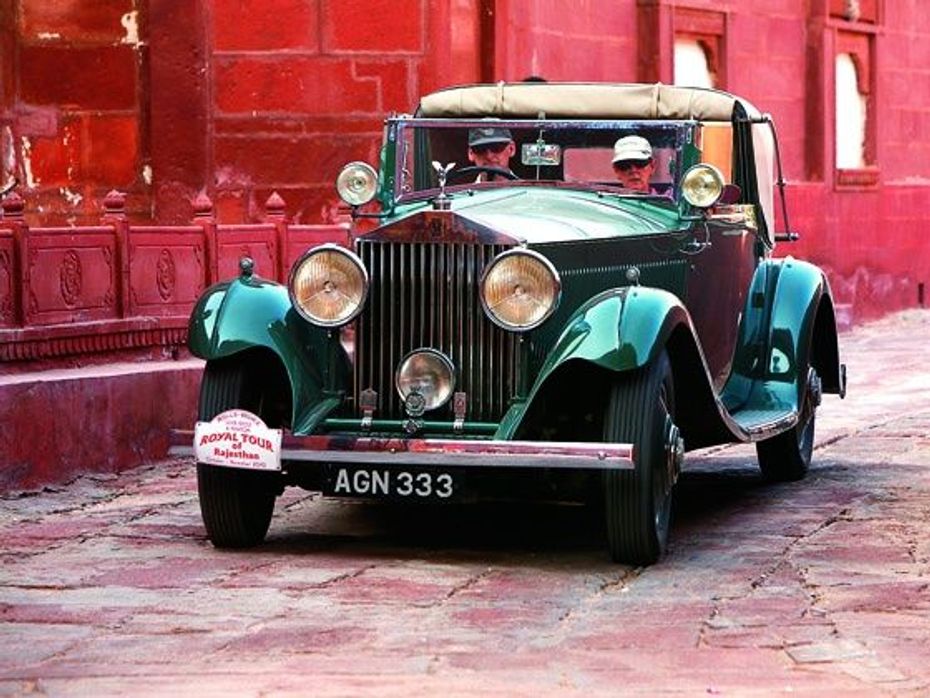
Two other Rolls-Royce models did part of the Royal Tour and they came from the Udaipur and Jodhpur royal garages. Maharana Arvind Singh Mewar had his 1934 Phantom II with Windovers limousine bodywork. This car was bought by the Maharana in England in the 1960s and it had been kept idle for well over 25 years before Graham Carter restored it completely in Udaipur in 2009-2010. The 1935 Phantom II Windovers drophead coupe of HH Maharaja Gaj Singh was probably the sexiest car on the tour and while it ran only part of the course, it was driven all the way by Babji himself. This car was in continuous use as a state vehicle and it underwent a complete overhaul in 2009. What probably many don’t know is that this was the very last Phantom II to be built by Rolls-Royce.
It might have been a small bunch of classic cars but make no doubt about the fact that the quality on song was probably of the highest vintage. I have never been exposed to so many great cars in such surroundings and for that I also have to factor in the glorious settings of the royal palaces and forts which the Royal Tour touched. In fact, mere words can’t describe the experience, the ambience and the gastronomic fare lavished at the Fort Pokaran heritage hotel where the Royal Tour was based for two nights. The genial Thakur Nagendra Singh and his family made everyone not just so very welcome but also feel at home. So you might not have a classic Rolls-Royce but that shouldn’t stop you spending quality time at Fort Pokaran for it is not everyday that you get to live and feel like a Maharaja. That I feel is what a Royal Tour could and should turn out for many intent on hitting the classic trail.

Maruti Suzuki Rock N Road: Redefining the SUV Experience

10 Lucky People To Win Gift Hampers With Maruti Suzuki Celerio Lucky...

Bosch Car Service: Your Trusted One-stop Destination for Car...

3 New Major Design Details Mahindra XUV 3XO Will Pack Over...

You Can Now Name Skoda India’s Upcoming Sub-4 Metre SUV

5 Features The Next-gen 2024 Maruti Suzuki Swift Is Expected To Get...

The Mahindra Scorpio N Gets A New Z8 S Variant With New Midnight...

Ford Endeavour And Ranger India Launch Possible WITHOUT Expensive...

Skoda India Announces Future Plans, Tata Nexon Sub-4 Metre SUV Rival...

Citroen Basalt vs Tata Curvv: Exterior Design Compared
India's largest automotive community